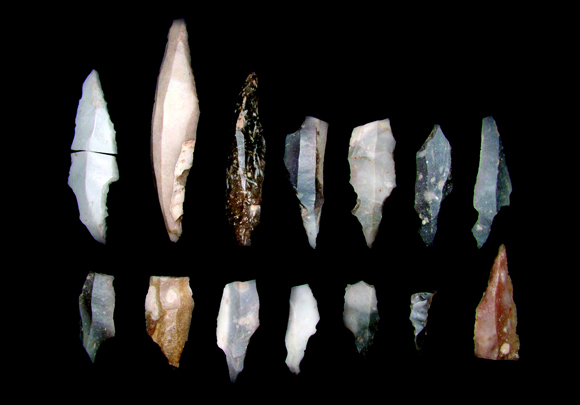
At Howburn Farm in South Lanarkshire, a scattering of flints, discovered by the Biggar Archaeology Group, turned out to be the earliest evidence found of human habitation in Scotland. The flints have been dated between 12,000 and 14,000 B.C. The implements are about 4cm in length, and as many as 40,000 fragments have been uncovered so far.
This discovery has changed the previous belief that Palaeolithic man hadn’t travelled further north than the Midlands, with Creswell Crags often considered the northern limit of Palaeolithic settlement.
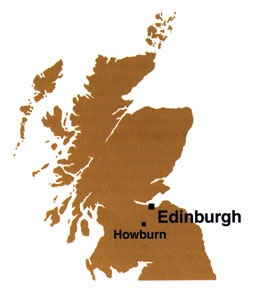
Much of Scotland would have been under ice. This was the time of the last Ice Age which was followed by temperatures rising around 13,000 BC. People were able to move to new lands now freed from the Ice. The temperatures for the next 3,000 years changed dramatically, going through phases of extreme cold to warm periods. It was in this warm phase probably around 12,000 BC, that the remarkable new finds at Howburn Farm belong.
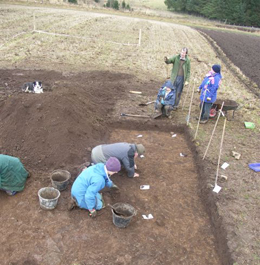
The flints were probably used by hunters to kill reindeer, mammoth and giant elk and to cut up prey and prepare their skins.
To put this in perspective. The size of these prehistoric animals next to a person, armed only with a flint.
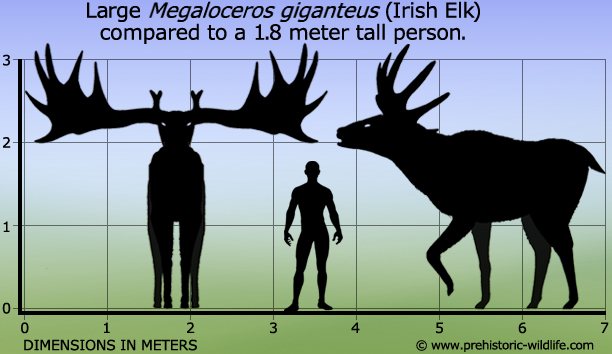
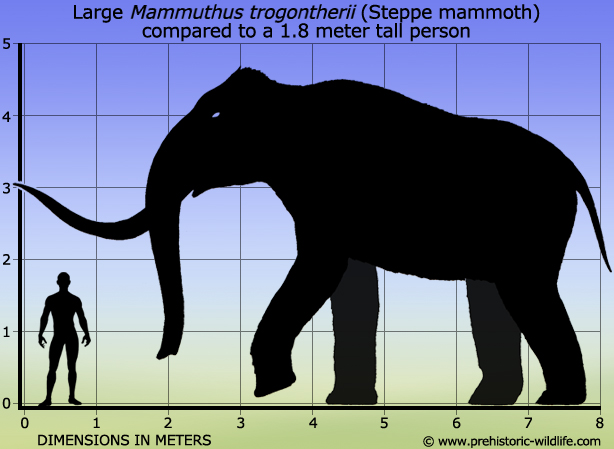
Initial estimates suggested stone tools at the scene were made in around 2000 BCE, but in 2009 they were shown to be more than four times as old, making them the earliest signs of humanity so far discovered in Scotland. The flints were described as “strikingly similar” to tools produced in continental Europe during the same period.
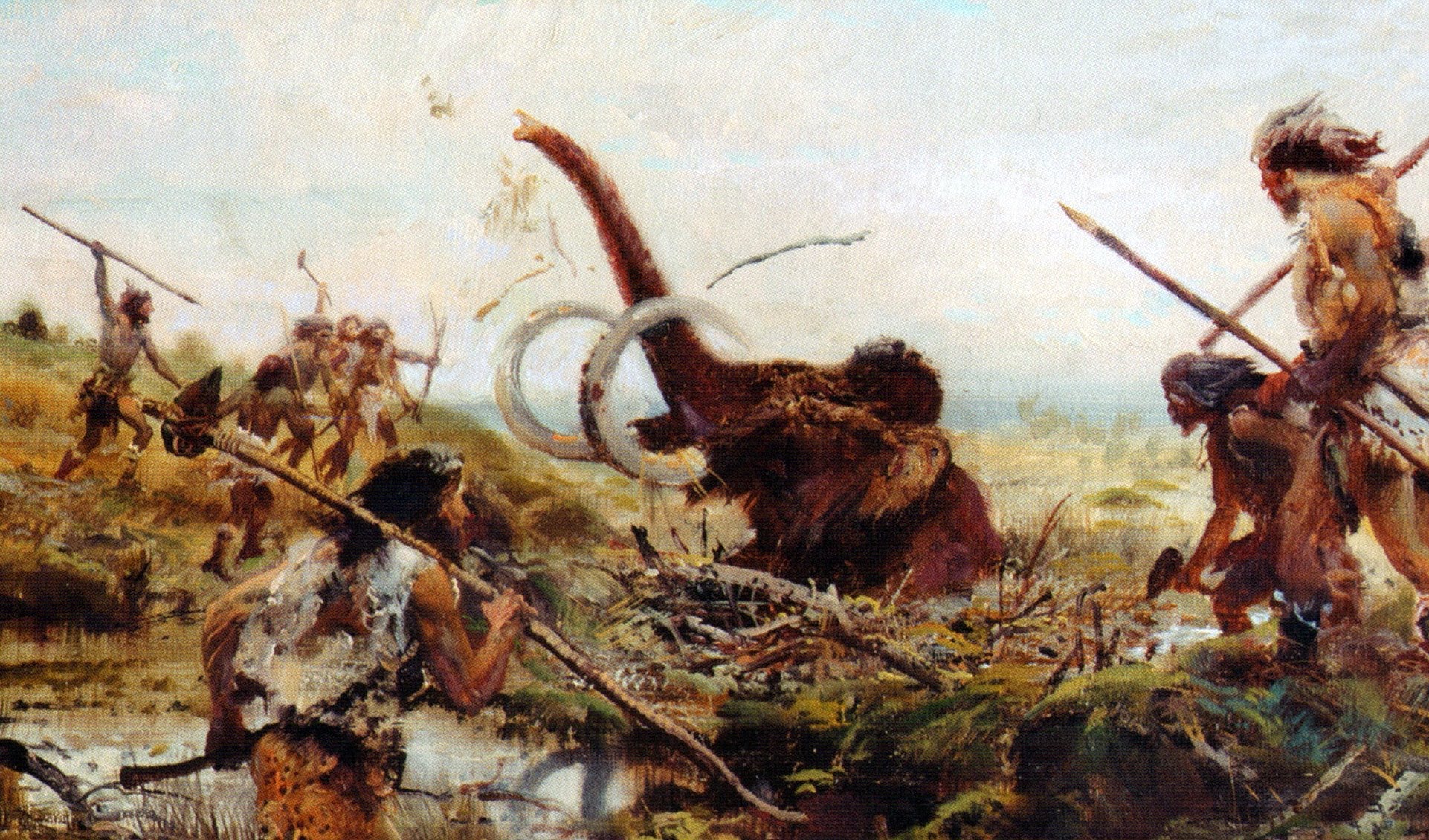
“These tools represent a real connection with archaeological finds in north-west Germany, southern Denmark and north-west Holland – a connection not seen elsewhere in Britain at this time,’ says Alan Saville, a Senior Curator in Earliest Prehistory at the National Museums of Scotland who is also the President of the Society of Antiquaries of Scotland and a specialist in the study of flaked flint and stone tools.
“This discovery is both intriguing and revolutionises our ideas about where humans came from in this very early period.
“In southern Britain, early links are with northern France and Belgium. Howburn is just one chance discovery and further such discoveries will no doubt emerge.”
“The climate had improved when the game hunters arrived, but the return of glacial weather is thought to have driven humans away until around 1,000 years later. A now-destroyed cave in Argyll had previously provided the earliest evidence of humans in Scotland.”
Howburn Farm is thought to have been an ancient camp where the hunters would make their flint tools. It is thought that these early people were hunting parties and not the ancestors of future Scots, that they took their hunt back across the North Sea basin towards Denmark and Germany. This was a nomadic life which persisted for thousands of years, until the Neolithic age saw the advent of farming.

Very interesting and informative blog!
Wondering if you have any blogs re: Clan Nairn?
Specifically, it’s sept relationships to MacIntosh,etc. and/or
how to gain membership in the Clan Nairn and MacIntosh Societies.
Hello Mike — I am former president of Clan Mackintosh of North America, here in the US. Not sure where you live. The closest to a Mackintosh society in the UK is the Clan Chattan Association.
Ray McHatton
I very much appreciate these posts, as I am interested in early peoples. Thanks.